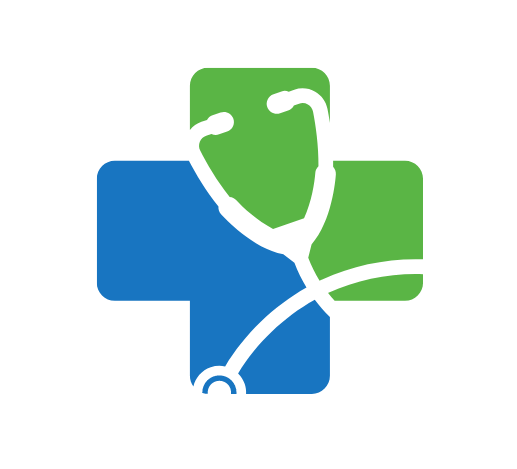
Have you ever considered how a simple difference in spoken words, far beyond just medical jargon, can become a monumental obstacle, severely affecting the safety and quality of care provided in a bustling healthcare environment, especially one as globally diverse as Turkey or the United Arab Emirates?
The Silent Risk: Miscommunication in Patient Care
When we step into the world of healthcare, whether as a patient or a provider, we enter a space where clear communication is not merely a courtesy but a critical, life-saving measure that underpins every action and decision we make. A language barrier, the difficulty in understanding or being understood, instantly elevates the risk of medical errors, delayed diagnoses, and ultimately, poorer health outcomes for the patient. We see this challenge acutely in metropolitan hubs like İstanbul, where countless different languages mingle, or in Dubai, a truly international city where expatriates vastly outnumber the local population, making linguistic diversity the norm rather than the exception in hospitals and clinics. The lack of a shared language between a healthcare professional and a patient can lead to grave misunderstandings about symptoms, medical history, and critical instructions regarding medication or follow-up care, eroding the foundational trust essential for a therapeutic relationship to flourish effectively.
The Dire Consequences of Linguistic Gaps
Miscommunication stemming from a language barrier has a profound and measurable impact, extending beyond the simple frustration of not being understood, touching directly on patient safety and the system’s efficiency across the board. Studies consistently show that patients with limited language proficiency face a significantly higher risk of experiencing adverse events during their hospital stay compared to those who speak the dominant local language proficiently. For instance, in a setting with high patient flow, a subtle mistranslation of a dosage or an allergic reaction reported by a family member can have catastrophic consequences, turning a routine visit into an emergency. Furthermore, the communication struggles often lead to prolonged consultations and increased costs as providers order more tests or schedule unnecessary follow-up appointments, trying to bridge the gap and confirm information they failed to clearly obtain in the initial encounter, which is something we must actively work to avoid.
Beyond Translation: The Need for Professional Interpreters
The immediate, often well-intentioned, reaction to a language barrier is to pull in anyone who seems to speak the patient’s language, perhaps a bilingual staff member who is not a certified interpreter, or even a relative, but this approach carries significant hidden risks that we must acknowledge. While a family member can offer comfort, they rarely possess the technical medical vocabulary or the necessary objectivity to accurately convey complex diagnostic information or sensitive consent details, which can introduce bias or crucial omissions into the medical record without anyone realizing it. The best practice, a standard we advocate for deeply, is the use of professional medical interpreters who are rigorously trained in both medical terminology and the ethics of interpretation, ensuring precise, confidential, and culturally sensitive exchanges between all parties involved in a way that truly benefits the patient. We are committed to upholding these standards in every interaction, making patient safety our highest priority.
Integrating Cultural Competence into Linguistic Support
Linguistic competence in healthcare is intrinsically linked to cultural competence because language and culture are inseparable forces that profoundly shape a person’s understanding of health, illness, and treatment expectations. A patient’s cultural background might dictate how openly they discuss pain, their views on certain medical interventions, or even who is permitted to make decisions about their care within the family structure. For example, in many Middle Eastern cultures, the presence of a professional, same-sex interpreter may be essential to maintain the patient’s comfort and modesty, especially during an examination or while discussing sensitive personal health issues, underscoring that simply translating words is not enough, and that we must consider the human elements involved. Effective communication, therefore, requires providers to not only utilize accurate language services but also to approach the patient with cultural humility, recognizing that their own views are just one perspective in a much wider, more diverse world of patient experiences.
Practical Strategies for Bridging the Gap in a Global Context
To effectively dismantle these communication walls in diverse environments, healthcare organizations can implement several actionable strategies that address both immediate and systemic needs for every patient encounter. A foundational step involves systematically identifying and documenting the language needs of every patient upon admission or registration, which helps the staff proactively mobilize the correct resources at the very beginning of the care process. The deployment of technology, such as video remote interpreting (VRI) or over-the-phone interpreting (OPI) services, can provide immediate access to a vast network of certified professional interpreters covering dozens, if not hundreds, of different languages, proving invaluable in emergency situations or remote clinic locations across different parts of a country like Turkey, where regional languages also play a significant role. Furthermore, providing key patient education materials, consent forms, and discharge instructions in the most frequently encountered community languages ensures that patients have a physical document to reference, reinforcing verbal instructions with tangible, easily accessible information.
Training and Systemic Investment for Quality Care
The responsibility for overcoming language barriers rests not just on the interpreters but on the entire healthcare system and every staff member within it, demanding a commitment to continuous education and systemic investment. We must prioritize ongoing training for all healthcare providers—from doctors and nurses to administrative and clerical staff—in how to effectively work with an interpreter, including techniques like speaking directly to the patient and utilizing a “teach-back” method to confirm patient understanding, which is a powerful tool. In this environment, where the approximate starting salaries and housing costs vary significantly based on the specialty and the city, healthcare facilities, whether in the busy clinics of Ankara or the sprawling medical centers of Izmir, need to factor in the cost of language services as an essential part of quality patient care infrastructure, not an optional expense, recognizing the return on investment in fewer errors and improved patient satisfaction and safety.
The Role of Technology in Modern Linguistic Access
The rapid evolution of technology offers promising new avenues for enhancing language access, though these tools should always be used judiciously and in support of, rather than replacement for, human expertise. While automated translation apps or portable devices are becoming increasingly sophisticated, offering a quick way to communicate basic, non-critical phrases, they must never be relied upon for complex medical discussions, diagnostic conversations, or the obtaining of informed consent, where the nuance of a single word can shift the entire meaning of a medical decision. Nevertheless, the strategic use of technology for tasks like appointment reminders or pre-visit screening questionnaires in multiple languages streamlines administrative processes significantly, freeing up human resources to focus on the critical, high-stakes interpretation moments during direct patient-provider interactions where a mistake cannot be afforded.
Fostering a Culture of Inclusion and Advocacy
Ultimately, the most powerful tool we possess for conquering the language barrier is the deliberate creation of a culture of inclusion and advocacy within the healthcare setting that welcomes and supports every person regardless of their native tongue. This starts with leadership recognizing and proactively addressing diversity, ensuring that systems and policies are in place to guarantee equitable access to communication resources for every single patient who enters the facility, a goal we constantly strive for as an industry. Providers must act as advocates for their patients, consistently asking about communication needs, and not proceeding with a consultation until they are certain that a qualified interpreter is present and the patient feels heard and fully understood, which is the mark of a truly compassionate and high-quality care provider.
A Look at Regional Standards and Commitment
Across the Middle East and globally, health authorities, such as the Turkish Ministry of Health, continually work to integrate language and cultural sensitivity standards into their national healthcare guidelines, pushing for better patient outcomes across the region. These national and international frameworks underscore the commitment to ensuring that every person’s right to comprehend their own health information is respected and protected throughout their entire care journey. The dedicated team at www.turkishdoctor.ae understands these challenges deeply, recognizing the immense linguistic diversity in the regions we serve, and advocates for the highest standards of professional language services, believing that better communication unequivocally leads to better health outcomes for everyone involved.
Investing in Health Literacy and Simplified Language
In addition to providing professional interpretation, we must also focus on improving health literacy by consciously employing simple, straightforward language and avoiding excessive technical jargon when speaking to patients, regardless of their proficiency in the local language, ensuring that the critical information is universally accessible. Using visual aids, such as anatomical diagrams or simple, universally recognized symbols, can often convey complex concepts far more effectively than words alone, helping the patient understand their condition and treatment plan without relying solely on the interpreter’s verbal skills. When we choose to simplify our communication and rely on clear, concise sentences, we not only empower the patient to take an active role in their own care but also provide invaluable support to the interpreters, enabling them to focus their energy on conveying the nuance and rhythm of the conversation accurately, making the entire interaction smoother, faster, and much safer for all.

 then "Add to Home Screen"
then "Add to Home Screen"